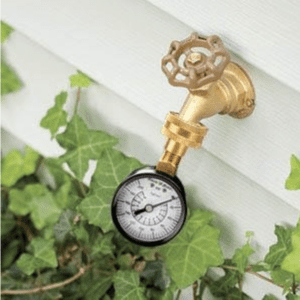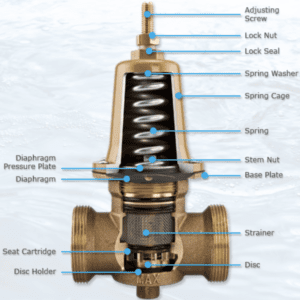High Water Pressure Problems
Most of my clients love the idea of high water pressure. Good pressure is great for vigorous showers or quickly filling a large bathtub. Unfortunately, water pressure that’s too high can cause a number of problems.
The plumbing system in your home is designed to operate in an ideal range of water pressures from about 30-70PSI. Anything higher than that can cause problems with the pipes, fittings and fixtures that contain or control the flow of water. Examples are water heaters, faucets, shower mixer valves and toilets.
Especially sensitive to water pressure fluctuations are ice makers, water dispensers, washing machine hoses, pool automatic fill devices, water filters, landscape irrigation systems and humidifiers. These devices have rather delicate and sensitive valves, and/or rely on hoses and connectors that can be pushed beyond their limits easily by high pressure.
Failure can create leaks that can waste water and some of these devices are located in critical areas where any failure can also cause catastrophic damage. Many water filters are located under sinks and inside vulnerable wood cabinets. Kitchens are often designed with ice and water equipped refrigerators surrounded by wood floors easily damaged by water. Water leaks in these areas can cause large dollar collateral damage.

The best way to learn if your water pressure is too high or low is to test it. You can do this with a simple gauge purchased on-line here. This gauge can be attached to your outside faucets to read the pressure. Do this in several areas around the house to make sure you get a true picture of the actual pressure.
If you have consistent water pressure in your home that exceeds 60 PSI, a water pressure regulator should be installed. These devices are mounted on the main water line coming into the home. This device is also called a pressure regulating valve, or PRV. The PRV should be sized to fit the diameter.of your incoming water line. Find one here.
Failing to address a water pressure issue could lead to even more damage to your plumbing and appliances, not to mention high water bills.

If your home was built after 2002, a PRV may already be installed, since that was the year it became required by law on all new homes. A typical PRV’s lifespan is about 7 to 12 years. I recommend that if you have one, it be proactively replaced every ten years.
If you do not already have one and your water pressure is over 60 PSI, a pressure regulator device should be installed on your main water line near your shut-off valve.









